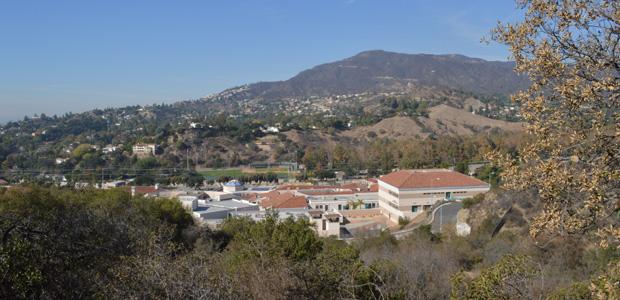The climb is treacherous. The trails disappear into thick brush if a wrong turn is taken. At the top, the hustle and bustle of campus is drowned out by the roar of the Glendale Freeway.
The hiking trails beyond campus are not easy to climb, but they provide access to a wildlife preserve only minutes away from the student parking lot.
The main trail reaches branches out into smaller trails as the hill becomes steeper. Some trails end abruptly, while others lead to pipelines that connect to fire hydrants below the hill.
Small lizards dart in and out of bushes while larger animals stir restlessly, hidden away in their nests. Skunks, bobcats and larger animals have been seen, but during the day they are only heard, expressing distress about the human intrusion.
Near the top, the view of campus is dwarfed by the Glendale and Los Angeles skylines. The Griffith Park hills cast a massive shadow over Atwater to the southwest. To the southeast, the skyscrapers downtown Los Angeles peek over the hills further down the Glendale Freeway.
For more than 35 years, retired professor Ron Harlan scaled the hills to research local plant and animal life. He had made it his mission to protect the habitat while giving students an opportunity to explore and research.
Every semester, Harlan would take biology students on a hike to familiarize them with native plants. The idea of the hike is to get students out of the classroom and give them first hand knowledge.
“These hikes give students an opportunity to learn something,” said Harlan. “They are able to tell me about a plant by just looking at it.”
Although he is retired, Harlan is still involved in protecting the preserve.
Before he ever took a class hiking with him, Harlan helped design and build some of the trails. In 1991 he also helped halt construction of a parking lot, after he saw construction crews had leveled oak trees.
“They never bothered to do an environmental impact report,” said Harlan. “I wondered how anyone could have approved this project.”
The college once owned more property even further up in the hills, but the land was sold when California State Route 2 was built. Despite the close proximity to the freeway and the campus, wildlife still thrives in the hills.
“We see a lot of lizards and snakes,” said Harlan. “Mammals are usually nocturnal, but we do see a lot of deer.”
Lunch tables can be found in a few places throughout the trails. This attracts more students who can enjoy a view of campus and the Glendale skyline.
Since there is no one to regularly clean the area, hikers should.be responsible and carry their trash out of the area.


